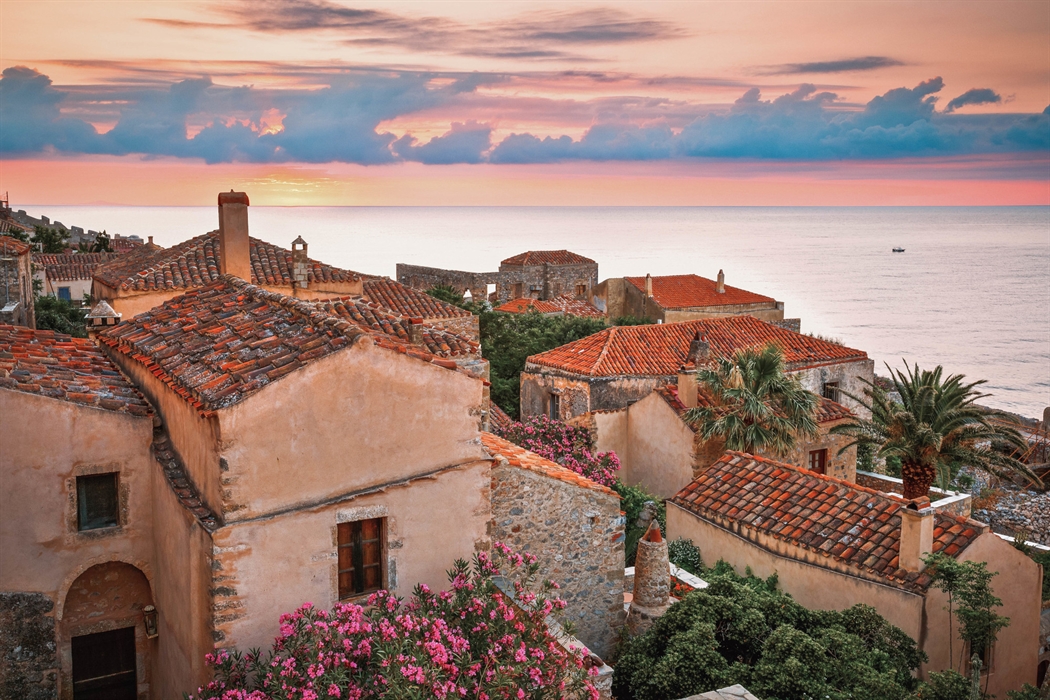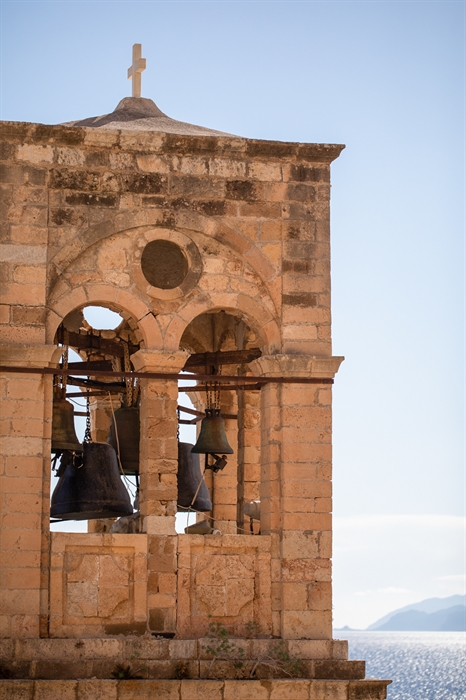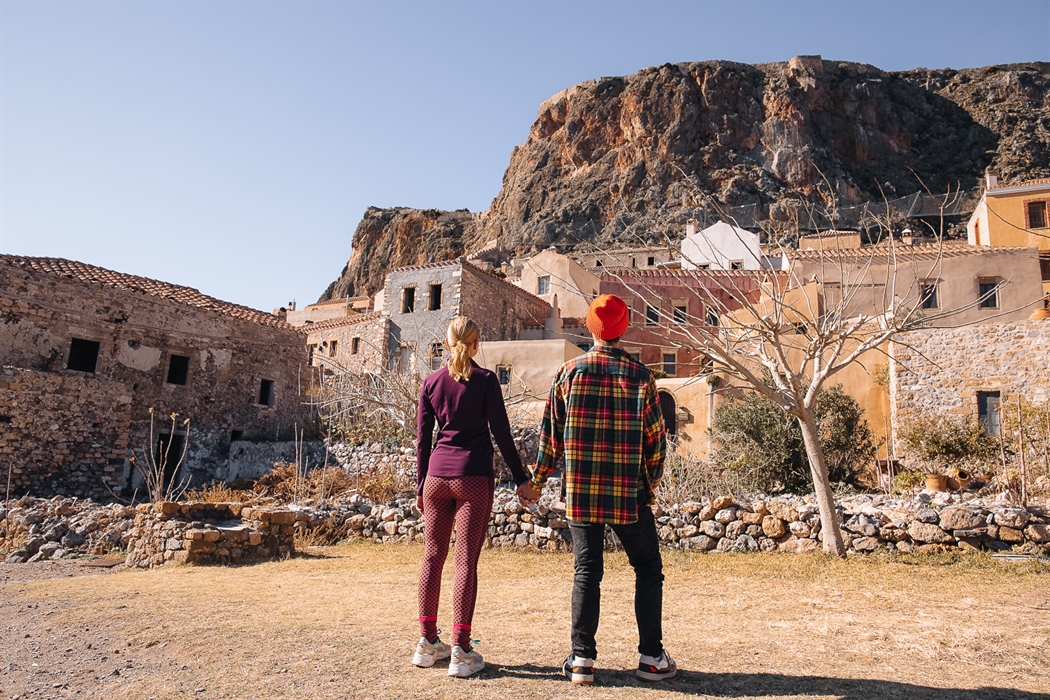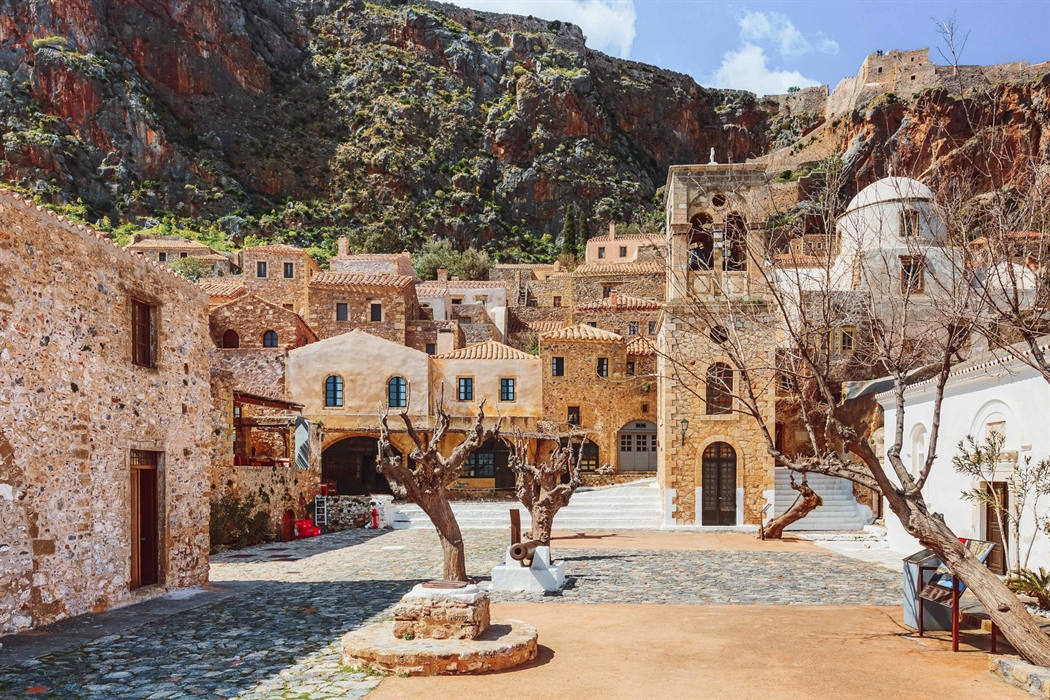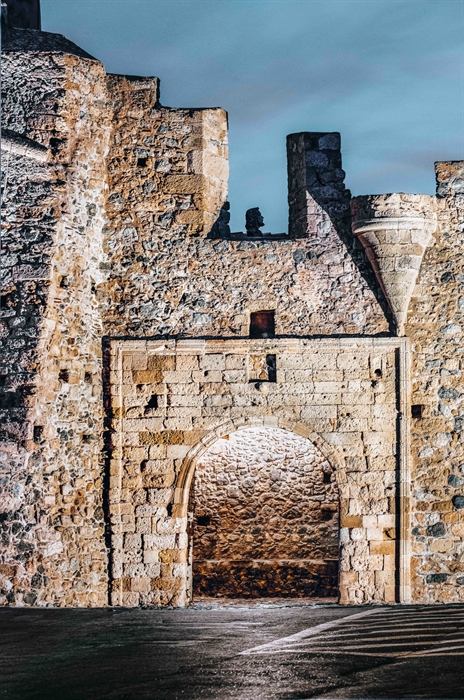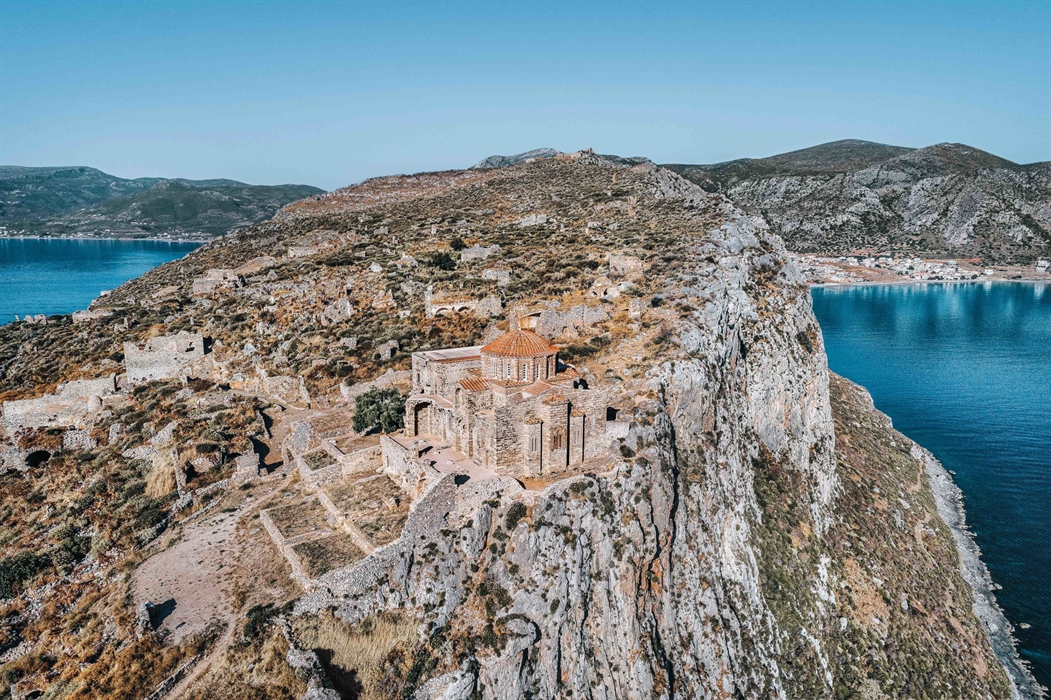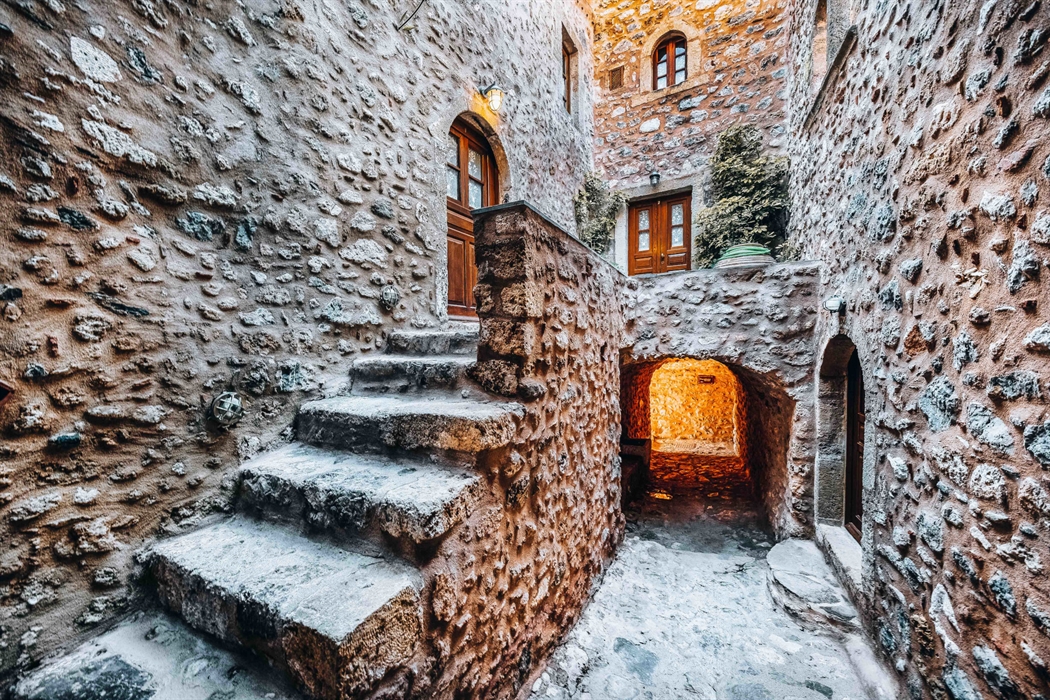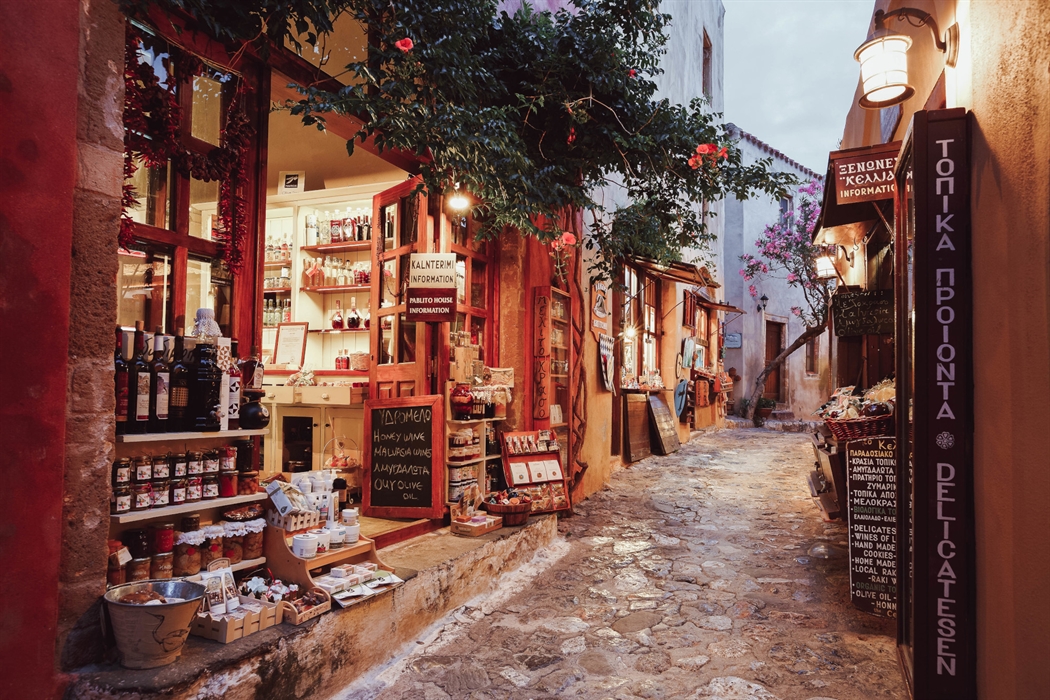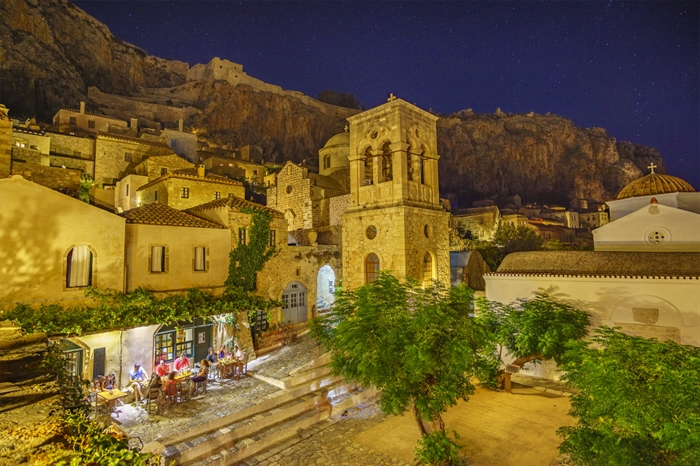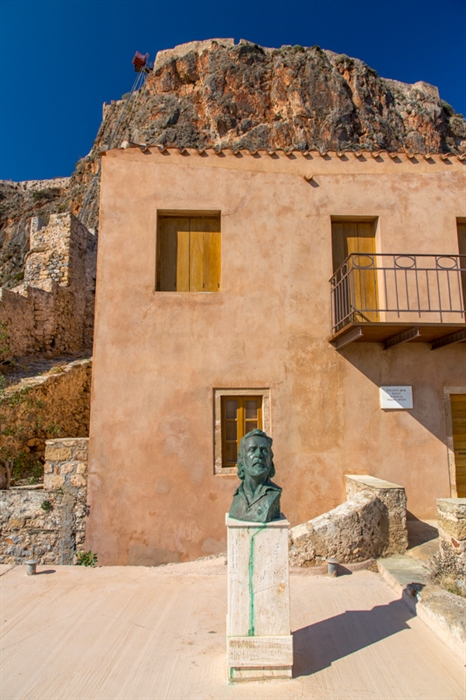Monemvasia
How to describe Monemvasia? Well, firstly, it’s a living Byzantine castle-state on its own island, with history and beautiful architecture everywhere you look. It has a unique atmosphere with restaurants, cafes, shops and guesthouses gathered in the narrow, cobbled lanes that twist around the stone-built houses and Byzantine churches. There are so many interetsting churches here it’s difficult to know where to start, but Agia Sophia, Panagia Chrysafitissa and Elkomenos Christos are three of the most interesting ones. So, take a step back in time and explore this amazing fortified city which was once an important naval and commercial stop in the Aegean sea routes.
You could be forgiven for thinking that you’ve travelled back in time when you visit Monemvasia. The present seems to fade away when you go through the city gate, and you set off on a voyage through time on this "stone ship", as the Monemvasian poet Yiannis Ritsos, calls the city.
Over the years, it’s been conquered by the Crusaders, the Byzantines, the Venetians and the Turks, but nowadays it’s the castle’s turn to conquer the hearts of everyone who sets foot here! As you walk around, you can’t help but feel a connection to those who have lived here in the past, whether they were conquerors who besieged the city or traders who made and sold Malvasia wine to places in the far corners of the earth. You might find your dreams are full of these people and their daily life here - rebuilding the city after attacks, praying at Agia Sophia or Elkomenos Christos, or welcoming new generations who would spend their lives here on what has to be one of the world’s most beautiful rocks!
The city is joined to the mainland by a narrow strip of land, the "moni emvasi” (one entrance) which is probably where the town got its name. The entire area of Old Monemvasia, bridge and rock, is a listed archaeological site and the peninsula of Monemvasia is classified as an Area of Outstanding Natural Beauty and a Historic Site.
The history of Monemvasia was determined by many factors over the centuries: its strategic position on sea routes, its strong fleet of ships that dominated the ports of the Mediterranean and the Black Sea, its inhabitants who were successful traders and also successful in other fields, the local church and also the good will it secured with imperial gold bullion.
The settlement we see today has two separate areas. The Upper City is now uninhabited and is scattered with the remains of numerous Byzantine and post-Byzantine buildings. The Lower City is surrounded by a U-shaped protective wall, with two gates on the east and west and a small exit to the sea - the Portelo in the middle of the sea wall. This opening was used to move goods and there was a wharf and then a cobblestone road which passed through the Agora and up to the Upper City. You can go swimming here, enjoy the smooth waters of the Aegean and look back at the rock in all its glory.
THE LOWER CITY AND ITS CHURCHES
The bustling Lower City is where to find shops, restaurants, cafes and guesthouses, but if you are looking for something more spiritual it’s also the right place to be. It is said that there were 40 churches in the town at one point, and 24 of them are still standing in the lower city today. They have Byzantine elements, but a succession of alterations were made to the churches after the second Venetian occupation. All the churches were vaulted, made of limestone and few had a dome.
As you stroll round, you will notice that the cobblestone streets pass under arches. The inhabitants of the medieval city had to find “urban planning” solutions as they were restricted to the area between the lower wall bordering the sea and the huge rock at the back of the town with the upper wall. Because of this, entire residential complexes were built over these vaulted arcades which people passed through to get from one point to another.
The old houses were built with mudstone and local black stone. They were usually three stories high, with a wooden gable or a three-gable roof. Another problem the inhabitants had to overcome was that the entire rock was arid and so the houses had water troughs where they collected rainwater through an elaborate network of conduits connected to the roof.
The main cobbled street of the Lower City is the Agora ("Foros") featuring cafes, shops, restaurants. It leads to the central square with the old cannon and the church of Elkomenos Christos, the oldest church in Monemvasia. It is believed to have been built in the 6th century when Spartans settled here. Later, it was altered during the first period of Venetian rule and continued to be used under Turkish rule. It was heavily damaged during the Orlov revolt against Ottoman rule in 1770 but was repaired after the Greeks gained independence in 1821. The church’s icon of the Crucifixion (14th century) is one of the most important Byzantine icons and has been through its own adventures including being stolen in the 14th century. It was found again, and was then exhibited for years in the Byzantine Museum of Athens, but in 2011 it was returned to Elkomenos Christos.
Panagia Chrysafitissa is an octagonal domed church which was built during the 1st period of Turkish rule. It was specifically built to house an icon which was miraculously transported here from Chrysafa which is around 40 miles away. The icon was found in the well on the south side of the temple, and the Evresi chapel was built there to mark the site. A building called the "Kellia", which originally belonged to a monastic complex, stretches out to the north.
Other notable churches in the Lower City are Panagia Kritikia (Myrtidiotissa), a single-aisle basilica with a dome which was built around 1700, and Agios Nikolaos, a three-aisled vaulted basilica with a dome which was built in 1703. There are also other smaller churches - such as Agios Andreas and Agia Anna which date from the 2nd period of Venetian rule (1690-1720), and Agios Dimitrios.
THE UPPER CITY AND THE FAMOUS AGIA SOFIA
The only entrance to the Upper City is in the middle of the southern section of the wall, at the end of a winding road that climbs up from the Lower City. This narrow gate leads through an archway to a small plateau, to the north of which is the house of the city’s Venetian governor, Sebastiano Renieri (1514).
The great church of Agia Sophia in the Upper City was built around 1150. It is considered by many to be a copy of Hagia Sophia in Istanbul, and this magnificent church is the only fully-preserved building in the Upper City. It is also one of the few octagonal type temples which remain in Greece and researchers have connected it to the Monastery of Odigetrias. In 1540, when the Turks occupied the castle, the Christians were expelled from the Upper City and the churches were deserted and fell into ruin.
Agia Sophia was the only exception, as it was turned into a mosque. When the Venetians came in 1690, it became a church again – this time a Catholic church - and when the Turks settled in the Upper City a second time they once again used it as a mosque. There are clear signs of alterations made by the conquerors in both the masonry and decoration, and the marble sculptural architectural features and the exceptional 17th century frescoes are outstanding.
The Upper City was a large settlement, as can be seen by both the area it covered and the extensive remains of Byzantine and post-Byzantine buildings.
You can see fountains, a bath from the Ottoman period and three open cisterns which were absolutely necessary to ensure residents and soldiers could survive if the island was under siege or if there was a drought.
The citadel, a square building with corner towers, is built at the highest point of the rock, and the panoramic view from there is breath-taking.
Read more about the history of Monemvasia.
Monemvasia Archaeological Collection
This fascinating collection is housed in a historic listed building which has seen many changes over its history: it was built as a mosque in the Turkish period (16th century), converted into a public building in the Second Venetian period (1690-1713), and then served as a prison and cafe after the island was liberated from the Turks. The permanent exhibition displays archaeological finds which were collected here or uncovered during excavations. They are historical testimonies of the human activity and artistic life that developed here from the early Christian years until late Turkish rule. They also show that Monemvasia enjoyed commercial and cultural links with other regions.
Did you know that
Vehicles are not allowed inside the castle state and the car park near the castle gate is usually full. It is a better idea to come on the bus from the nearby village of Nea Monemvasia.
There are guesthouses both inside and outside the castle
Summers are intensely hot in Monemvasia. If you want to enjoy exploring the island, it’s a good idea to visit at some other time.
Monemvasia - The monuments
One of the most beautiful destinations in Greece, Monemvasia charms you with its mysterious ambience, history and architecture. From the 40 churches that supposedly existed earlier, 24 have been preserved to our day. Agia Sofia, Panagia Chrysafitissa and Elkomenos Christos stand out among them.
It has been given a lot of names: “Gibraltar of the East”, “Castle Above the Clouds” of Morea, “Renowned City” of Emperor Andronikos II, “Saved by God City” of the Palaiologos dynasty of Mystras, “Castle of Flowers” of the Turks.
The entire region of Old Monemvasia, along with its bridge and rock, has been declared an archaeological site. The peninsula of Monemvasia is designates as a site of particular natural beauty and a historical location.
Throughout its history, Monemvasia was a bone of contention among potential conquerors, who wanted to occupy it, realising its geopolitical significance. Its fate was parallel to the sphere of influence of the great powers of the time - such as the Franks, Byzantines, Venetians and Turks. In its heyday, Monemvasia was an important naval and commercial station for the waterways in the Aegean Sea. In fact, the wine which prevailed in wine trade for centuries, the famous Malvasia wine,had the castle-city as its point of departure.
According to sources, Monemvasia was first inhabited in the 6th century by residents from the region of Sparta who took refuge on the unconquered rock, and gained a lot of privileges under the reign of emperor Maurice. The city was built on the top of the rock, Goulas, and was later expanded lower. Its strategic location made it an important commercial centre and port, but pirates had troubled the residents since the 11th century.
The city was surrendered to the Franks, with the aid of the Venetians, after a 3-year siege. They held it for 13 years, and then, William Villehardouin negotiated with emperor Michael VIII Palaiologos and handed it over to him. In 1463, it passed into the hands of Venetias until 1540, when it was surrendered to the Turks, along with Nauplio. In 1666, Evliya Çelebi described its houses as “worthy of a king”. However, when the city was surrendered once again to the Venetians in 1690, the upper part of it was empty. The Turks recaptured it and held it until 1821. It was among the first fortified cities of the Peloponnese to be liberated.
(Read detailed historical facts on the website of the Municipality of Monemvasia)
Read more about the monumentsof Monemvasia.
Location
Find the destination on the interactive map below.
Categories
Weather
Σχετικό περιεχόμενο χρηστών (UGC)
Ενημερωθείτε για ενδιαφέροντα θέματα γύρω από τον προορισμό μέσα από το περιεχόμενο των χρηστών μας
Discover 7 hidden gems of the Peloponnese
Many of you may have already visited some of the most renowned attractions…
TOP 10 archaeological museums in the Peloponnese
Olympia, Mycenae, Epidaurus, Diros Cave, Ancient Corinth, Messene and…
TOP 10 Castles in the Peloponnese
Castles galore! Mystras, Monemvasia, Palamidi, Methoni, Koroni,…
Newsletters
- About us
- FAQ's
- Map
- Tourism information centers
- Disclaimer
- Sitemap
- Our brand
- Media roum
- Adding your bussiness
- Corporate
- MICE

Peloponnese. Greece beyond the obvious





Design and creation from Cosmote
Marinas and Moorings
Diving centers
Get inspired
- Media gallery
- Blog
- The Peloponnese in the media
- Your feedback
- Users' general content
- Users' local products
- Users' events content
- Ask a local
More
- Accommodation
- Travel agencies
- Restaurants
- Services
- Destinations Map
- Weather
- Public transport
- Events
- Frequently asked questions
- Useful phones
- B2B
- Destination Data
- Contact

